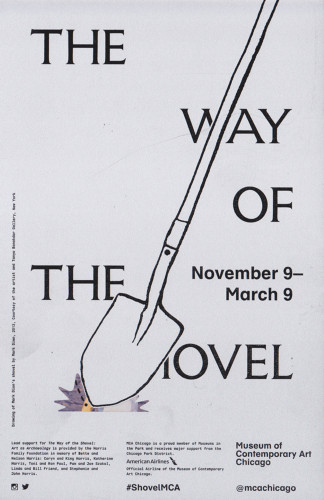
The Way of the Shovel: Art as Archaeology scratch-off campaign
Romain André, Michael Savona, Chicago, Illinois, 2013
Description
This campaign for MCA Chicago’s exhibition The Way of the Shovel: Art as Archaeology responded to the following insight from the marketing brief: Every piece of art is a story waiting to be uncovered. The ads aimed to make the exhibition—which explores contemporary artists’ interests in history, archaeology and archival research—accessible to the general public.
Four bus shelter ads placed around Chicago's Loop and a tip-in newspaper advertisement gave users the opportunity to become archaeologists and archive their own histories through the familiar language of lotto scratch-offs. When users scratched off the silver layer, which depicted a shovel artist Mark Dion illustrated for “The Way of the Shovel,” they revealed local artist Tony Tasset’s colorful portrait of himself dressed as Robert Smithson, as well as an offer for two-for-one admission to the museum.
Read the full case study with juror comments here: [http://www.aiga.org/case-study-the-way-of-the-shovel/]
Juror Notes
“The Way of the Shovel is a brilliantly simple, effective and insightful campaign. By understanding people’s natural behavior, it takes what is normally a liability in outdoor campaigns (the potential for defacement) and makes it essential to the solution. It’s smart, engaging and courageous—an unconventional example of human-centered design.” —Christopher Simmons
Credits
- Designers
- Romain André, Michael Savona
- Client
- Museum of Contemporary Art Chicago





